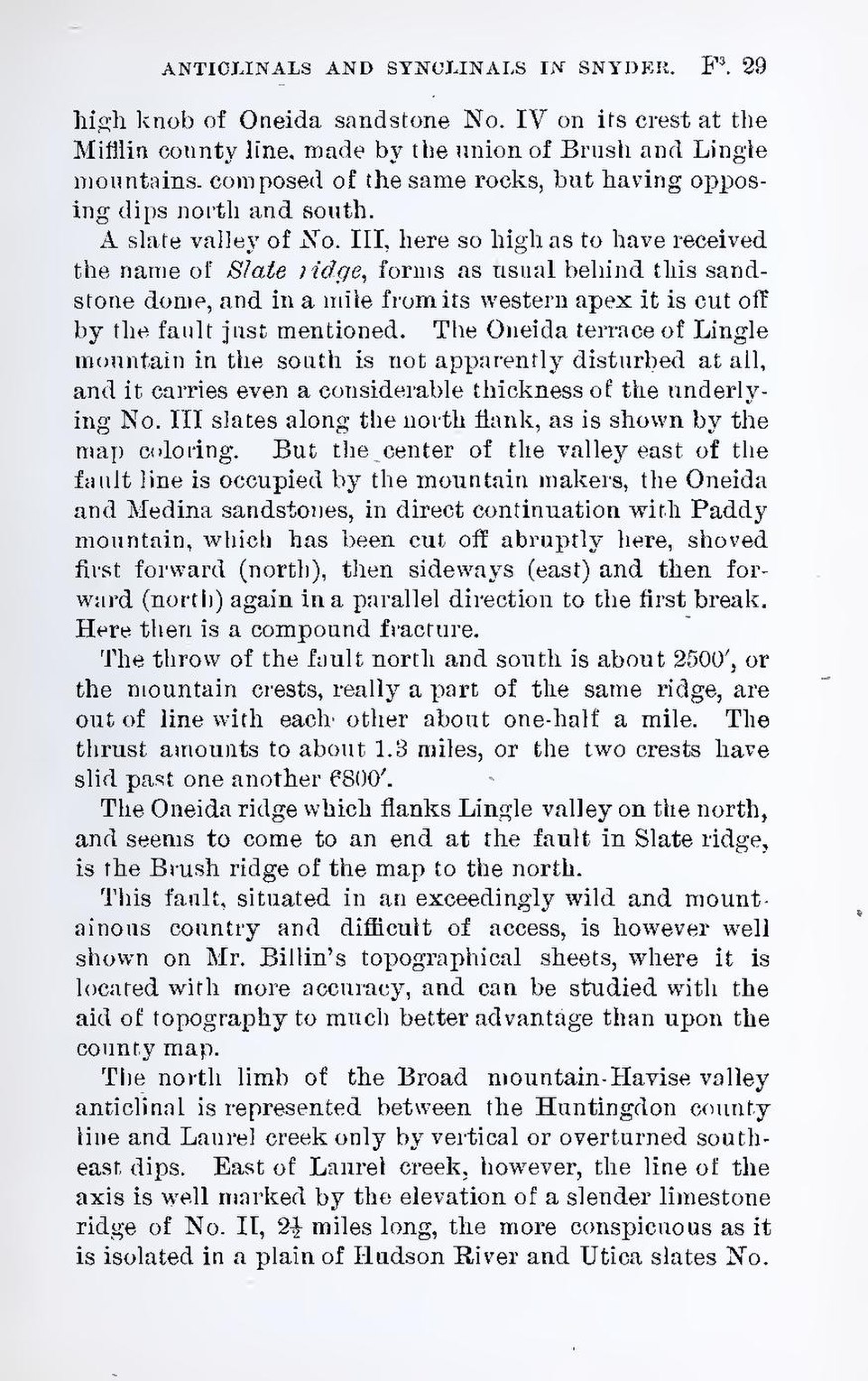high knob of Oneida sandstone No. IV on its crest at the Mifflin county line, made by the union of Brush and Lingle mountains. composed of the same rocks, but having opposing dips north and south,
A slate valley of No. III, here so high as to have received the name of Slate ridge, forms as usual behind this sandstone dome, and in a mile from its western apex it is cut off by the fault just mentioned. The Oneida terrace of Lingle mountain in the south is not apparently disturbed at all, and it carries even a considerable thickness of the underlying No. III slates along the north flank, as is shown by the map coloring. But the center of the valley east of the fault line is occupied by the mountain makers, the Oneida and Medina sandstones, in direct continuation with Paddy mountain, which has been cut off abruptly here, shoved first forward (north), then sideways (east) and then forward (north) again in a parallel direction to the first break. Here then is a compound fracture.
The throw of the fault north and south is about 2500′, or the mountain crests, really a part of the same ridge, are out of line with each other about one-half a mile. The thrust amounts to about 1.3 miles, or the two crests have slid past one another 6800′.
The Oneida ridge which flanks Lingle valley on the north, and seems to come to an end at the fault in Slate ridge, is the Brush ridge of the map to the north.
This fault, situated in an exceedingly wild and mountainous country and difficult of access, is however well shown on Mr. Billin’s topographical sheets, where it is located with more accuracy, and can be studied with the aid of topography to much better advantage than upon the county map.
The north limb of the Broad mountain-Havise valley anticlinal is represented between the Huntingdon county line and Laurel creek only by vertical or overturned southeast dips. East of Laurel creek, however, the line of the axis is well marked by the elevation of a slender limestone ridge of No. II, 2½ miles long, the more conspicuous as it is isolated in a plain of Hudson River and Utica slates No.
